Mobile Stargazing: Diving into Deep-Sky Objects Using Mobile Apps
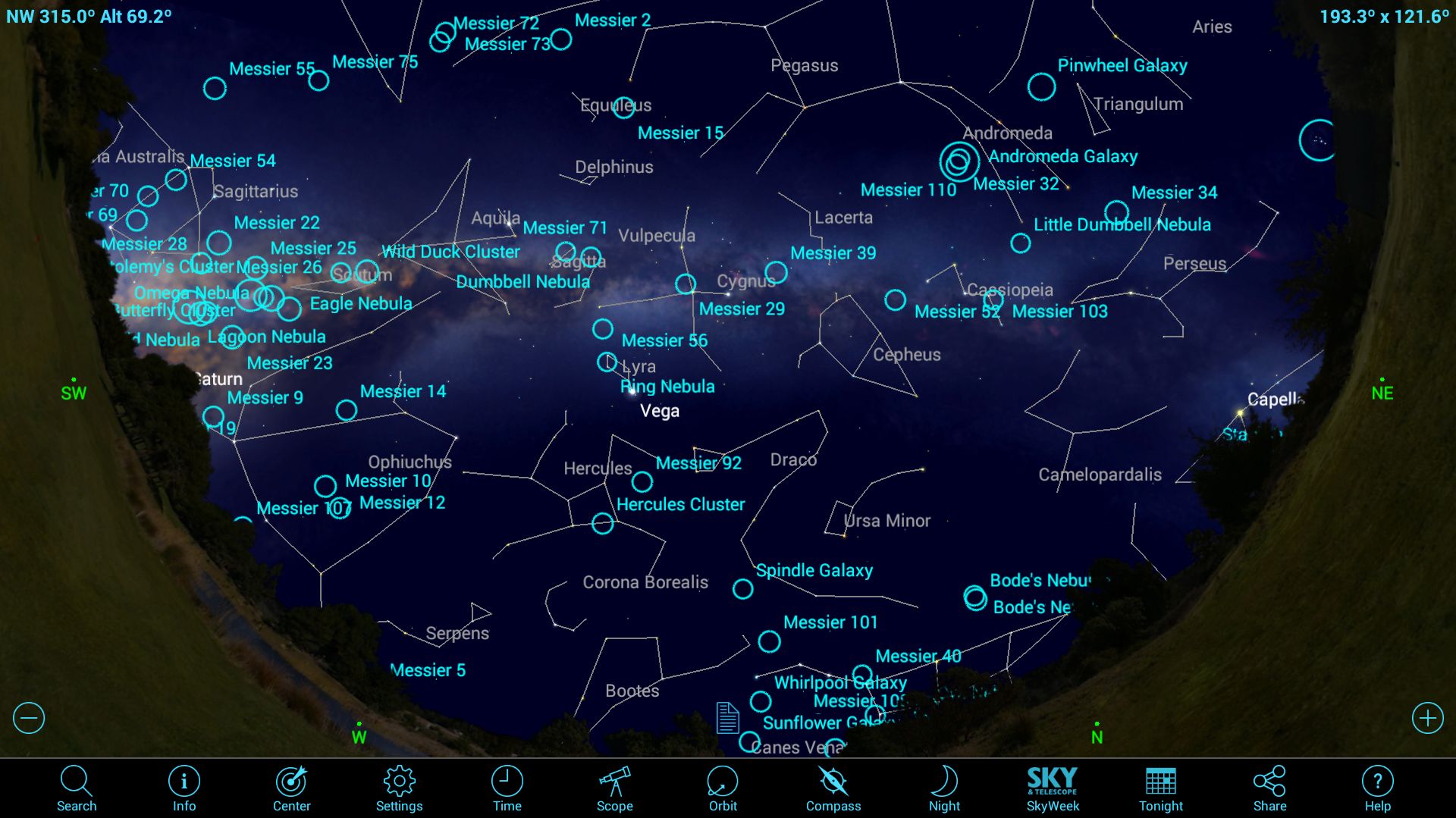
Autumn is a wonderful time of the year for skywatching. The bugs of summer are gone, it's not too cold yet, and it gets dark at a reasonable hour. It's easy to grab your binoculars or telescope and head out into the yard or your local park after dinner. But what should you look at? In this edition of Mobile Astronomy, we'll dive into deep-sky objects, the most beautiful and interesting sights in the night sky.
We'll tell you what they are and how to locate them using your favorite astronomy app. We'll also suggest some of the best ones to look for this at time of year.
Beyond the nearby stars
On any clear night, the moon and the bright planets and stars are the first things to catch your eye. But those are just the beginnings of what you can see if you know where to look. The best astronomical sights are the deep-sky objects, star clusters and nebulas associated with our Milky Way galaxy and the fuzzy "island universes" that are other galaxies located many millions of light-years away, but still within reach of amateur telescopes. [Best Telescope for Beginners]
The term deep-sky object covers celestial objects outside our solar system that are larger than individual or double stars. These objects come in a variety of types, sizes and visual magnitudes (i.e., brightnesses). The brighter ones are easily seen with the naked eye under the right sky conditions. Many are within reach of binoculars and small backyard telescopes. It takes larger-aperture telescopes or long-exposure photographs to make the dimmer ones visible.
Over the years, the best of these objects have been compiled into popular lists such as the Messier and Caldwell catalogs, each containing more than 100 entries. Sky-charting apps such as SkySafari 5 include these lists in their main search menus.
One of the most comprehensive catalogs of deep-sky objects is the New General Catalog. Based on the 19th-century searches of the night sky by English astronomer John Herschel, it has been updated and expanded from time to time. In its present form, it includes 7,840 objects of all types, plus a supplement containing another 5,386 objects. Your astronomy app will identify objects in this catalog by using the prefix NGC. More formally, each category of object has its own specialized lists, which I'll touch on below. So, a search in your app will turn up multiple designations for a given object.
Several of the large associations for avid skywatchers, including the Astronomical League in the U.S. and the Royal Astronomical Society of Canada (RASC), have created their own lists of deep-sky objects that people can use to earn observing certificates. Multiple lists divide the objects by type or by observing difficulty. The SkySafari 5 app lets you download the lists and track your progress as you observe the objects. (We'll cover this in a future Mobile Astronomy column.)
Get the Space.com Newsletter
Breaking space news, the latest updates on rocket launches, skywatching events and more!
Let's describe what the object types are and where they typically occur in the sky. Below, I'll include a table that lists some of the best of each class of object and the usual names and catalog designations that you can use to search in your app.
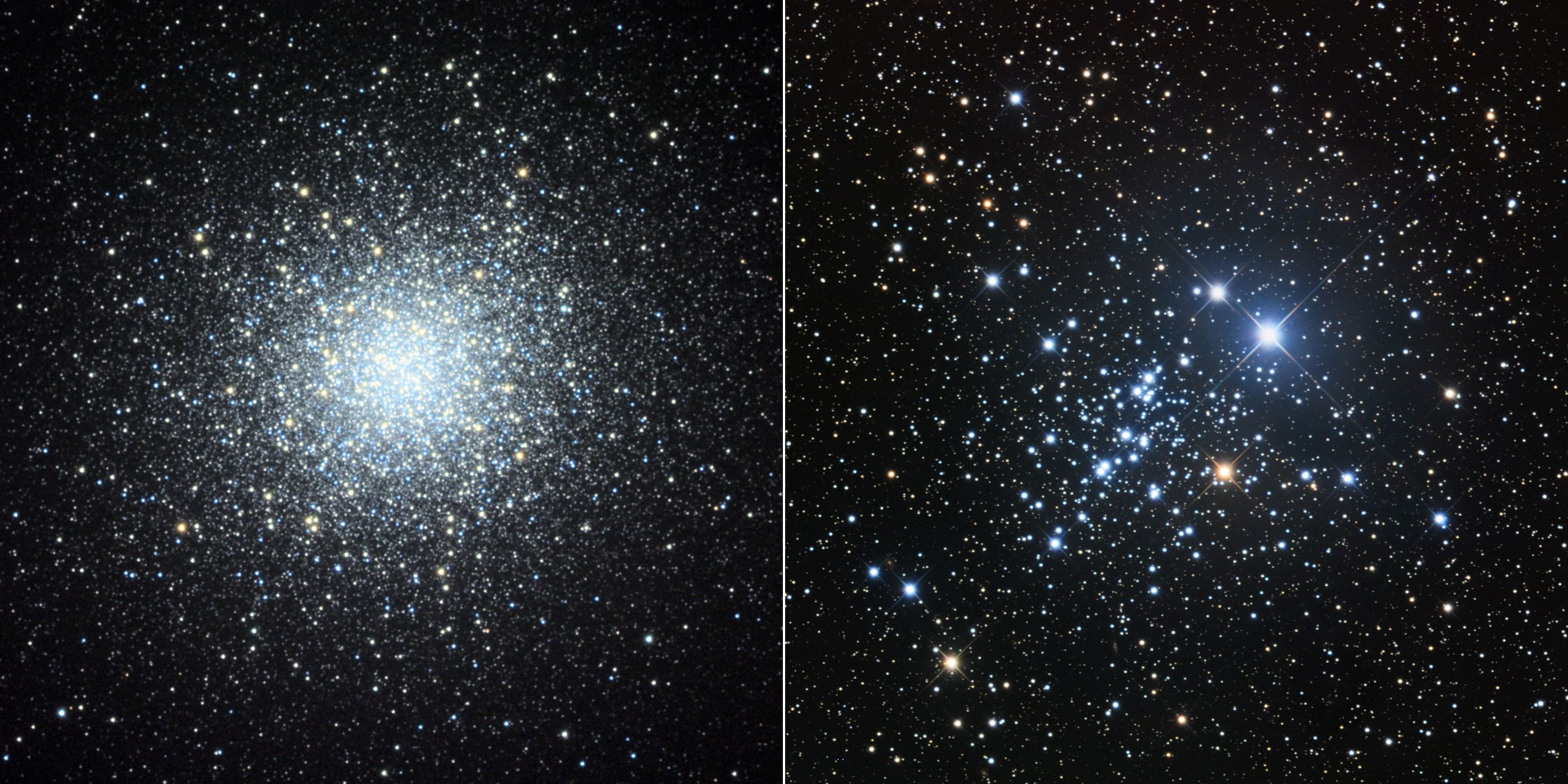
Open clusters are gravitationally bound concentrations of stars that can have from a handful of members up to hundreds of stars. In the night sky, they are primarily found in or near the Milky Way, because they have been formed from the rich gas clouds that concentrate in the spiral arms of our galaxy. In most open clusters, the stars look similar to one another, because they were created together. But many feature anomalous stars that differ in color or brightness because they sit between Earth and the cluster.
The apparent size of a cluster that you will be able to see in the night sky is usually indicative of its distance from Earth, which ranges from hundreds to a few thousand light-years. The nearest ones cover large patches of the night sky, anywhere from two to 10 times the moon's diameter, and the individual stars are plain to see with the naked eye and binoculars. Examples of these are the Hyades Cluster, which forms the triangular face of the constellation Taurus the Bull, and the Pleiades Cluster (sometimes called the Seven Sisters), which is also in Taurus. The more-distant open clusters resemble small, faint, fuzzy patches in the sky that resolve into individual stars when viewed with magnification. Many feature whimsical patterns of stars (such as the Owl Cluster), and some clusters have residual nebulosity surrounding them.
There are 26 open clusters in the Messier list. In your app, open clusters that are not part of the Messier list may be designated using other codes, such as "Cr" or "Coll," indicating that they are some of the 471 members of the formal list created by Per Collinder in 1931, or "Mel" for Philibert Jacques Melotte and his 1915 catalogue of star clusters.
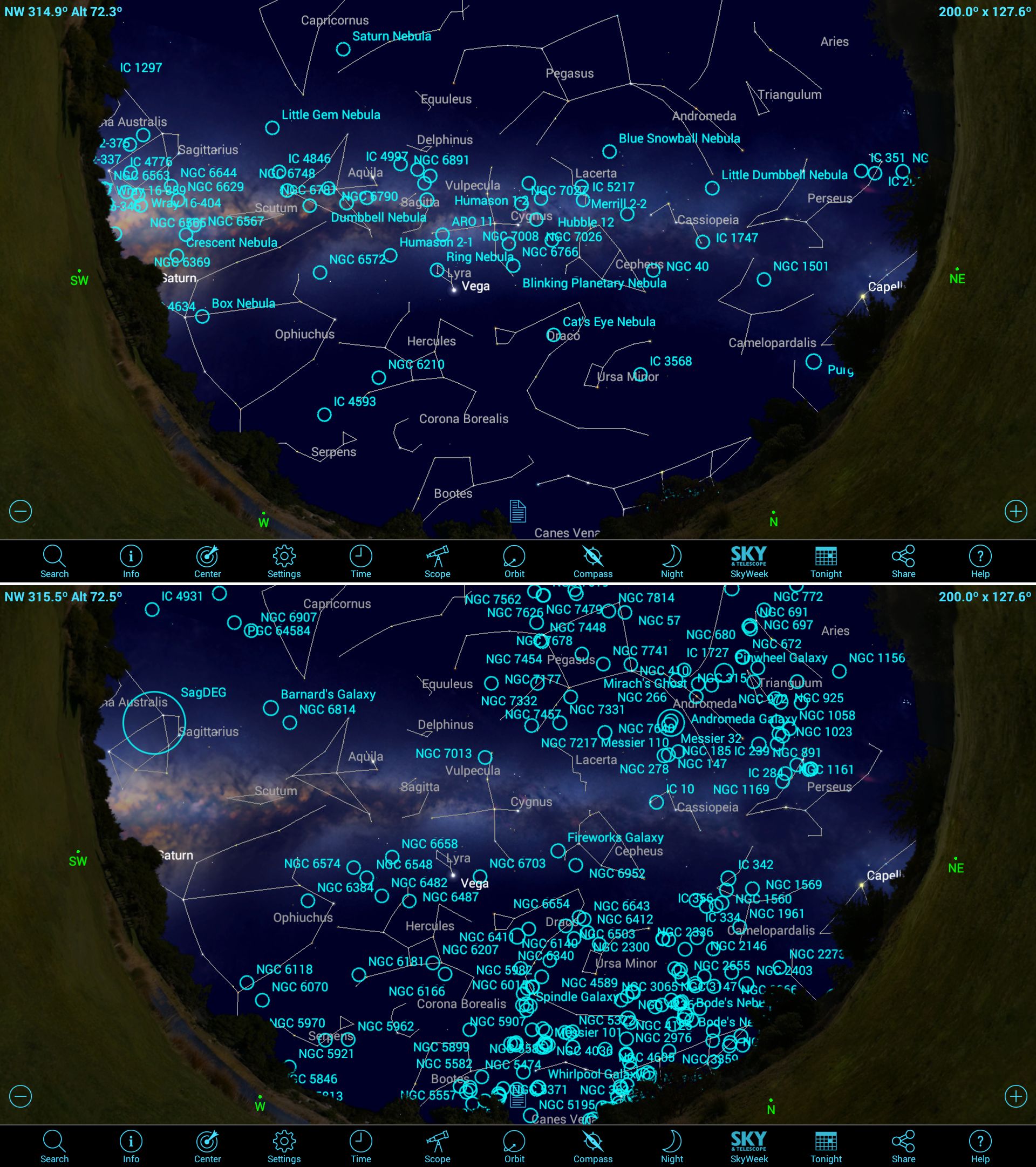
Globular clusters are collections of up to a million very old stars arranged formed into a tightly packed, spherical ball due to their mutual gravity. These ancient clusters orbit our galaxy's core, like bees around a hive, so they are generally found both alongside the Milky Way and at some angular distance away from it. Their distance from Earth ranges from 15,000 light-years to a few hundred thousand light-years. The nearer ones make wonderful targets for backyards telescopes, looking like salt spilled onto a black velvet tablecloth. The brightest ones are visible with the naked eye or via binoculars under a dark sky. Looking like dim, fuzzy patches, none of the globular clusters cover much of the sky, appearing as only a fraction of the moon's diameter in size.
Early in the 20th century, U.S. astronomer Harlow Shapley used the distances and positions of these objects to establish our sun's location in the outskirts of the Milky Way galaxy and to estimate the size of our galaxy.
There are 29 globular clusters in the Messier list, and approximately 120 more in the NGC catalog. The best ones to look at during the autumn are listed below.
Nebulas are concentrations of gas and dust in our galactic disk, so they tend to be located within or near the plane of the Milky Way. They come in three main types. Emission nebulas are composed of ionized hydrogen gas that glows with a pinkish light triggered by radiation from nearby stars. Reflection nebulas are wispy collections with a bluish glow created by starlight reflected from gas and dust that surrounds the stars. And dark nebulas are dense clouds of interstellar dust that obscure the stars beyond them, looking like holes in space.
The light from nebulas tends to be spread out, causing them to be dimmer than objects composed of stars. For this reason, they are best viewed in dark, moonless nights. As with open clusters, nebulas can cover swaths of sky many times the diameter of the moon — not surprising, since they are the enormous structures that birth star clusters. Nebulas occur in a variety of shapes that lend them their names, including the North American, California, and Heart and Soul nebulas. Many mobile-astronomy apps include full-color imagery of the best nebulas, giving you a better idea of what you are looking for.
The most accessible nebula for skywatchers is the Orion Nebula, an emission nebula (and some dark nebula dust lanes) located in that constellation's sword. This one is relatively close to Earth, only about 1,400 light-years away, making it visible to the naked eye and even better in binoculars and backyard telescopes. It's rising in the east at about midnight now, but will be visible at earlier times in the night later this year. (The constellation of Orion features a variety of nebula types.)
In the meantime, on the next dark night, you can try scanning the Milky Way above the southwestern horizon. Use your app to help you find the four reasonably bright nebulas in that part of the sky (listed below). It is late in the season for them, but they'll return next summer. I've also listed several worthy targets in Cygnus, Perseus and Cassiopeia. Telescope owners should consider acquiring Oxygen-three (OIII) or Ultra-High-Contrast (UHC) filters that allow nebula light wavelengths to pass while reducing the dimming effects of scattered light pollution.
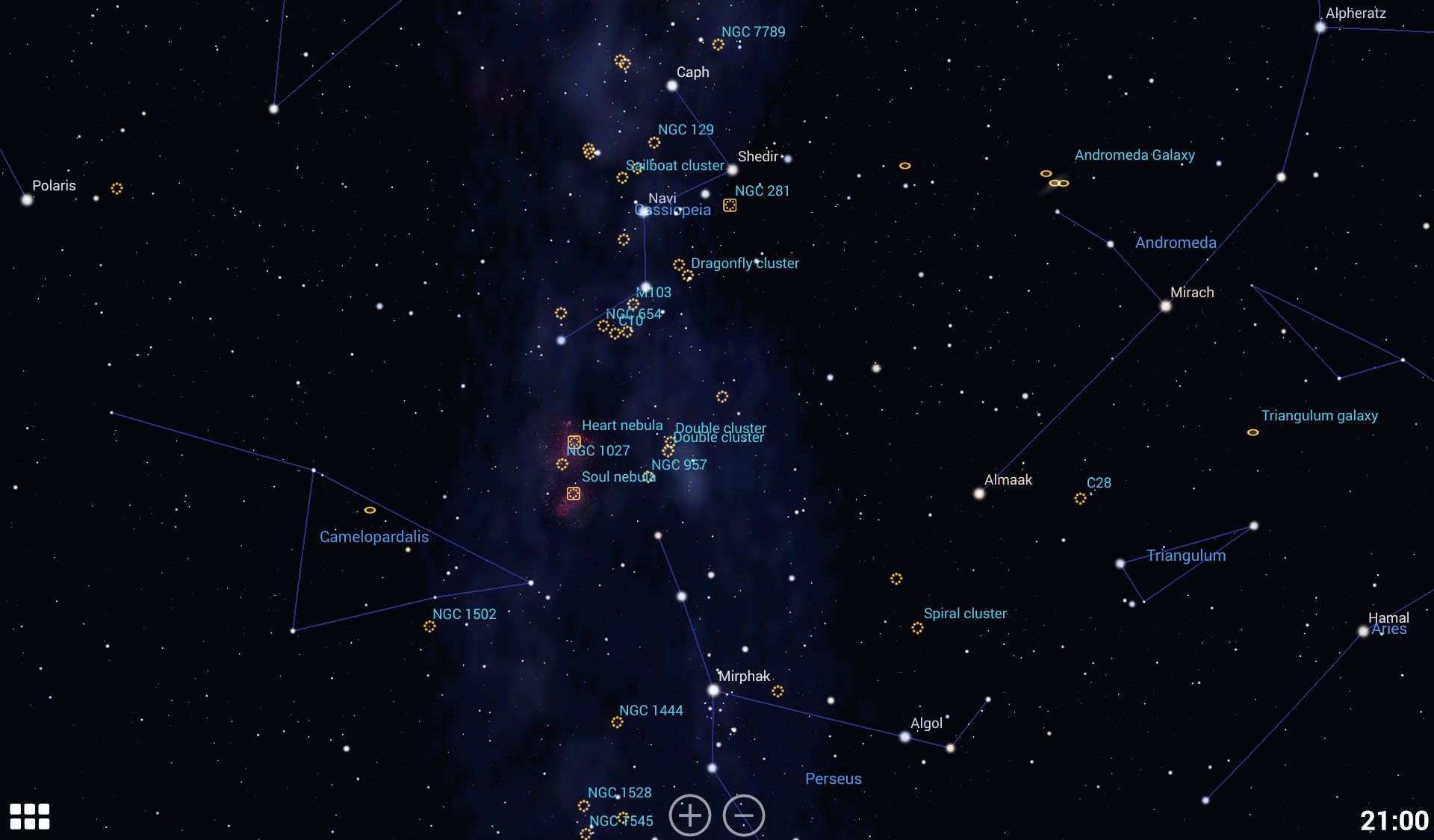
Planetary nebulas are the spherical corpses of sun-like stars that have ejected their outer layers of material to create massive shells of expanding gas. The dead star's hot exposed core, now a white dwarf star that radiates and makes the gas shells glow. These spectacular objects, popular at star parties, appear planet-like in a telescope and exhibit a variety of colors and internal structures. They can be found anywhere in the sky, but there are more near the plane of the galaxy — where most of the galaxy's stars are.
There are four planetary nebulas in the Messier list. The best of these, the Ring Nebula in Lyra, is not to be missed, appearing as a dim, grey smoke ring in backyard telescopes and improving with more aperture. Other favorites include the Dumbbell Nebula in Vulpecula, which resembles a faint apple core, and the Blinking Planetary in Cygnus. This one lets you flip between seeing the central white dwarf and the surrounding blue glow — just by using averted vision. It's fun! Most of the smaller planetary nebulas are designated using "PK," after the Perek and Kohoutek Catalog of Galactic Planetary Nebulae.
Supernova remnants are filaments of gas glowing due to the expanding shock waves produced by the violent explosion of massive stars long ago. The Veil Nebula in Cygnus is a ragged, circular feature roughly four times the diameter of the moon. This deep-sky object can't fit into the field of view of a telescope, but you can trace its outline a portion at a time. It, too, benefits from OIII and UHC filters. The first object in the Messier list, the Crab Nebula, is a dimmer, more compact remnant that requires a dark sky and a larger telescope.
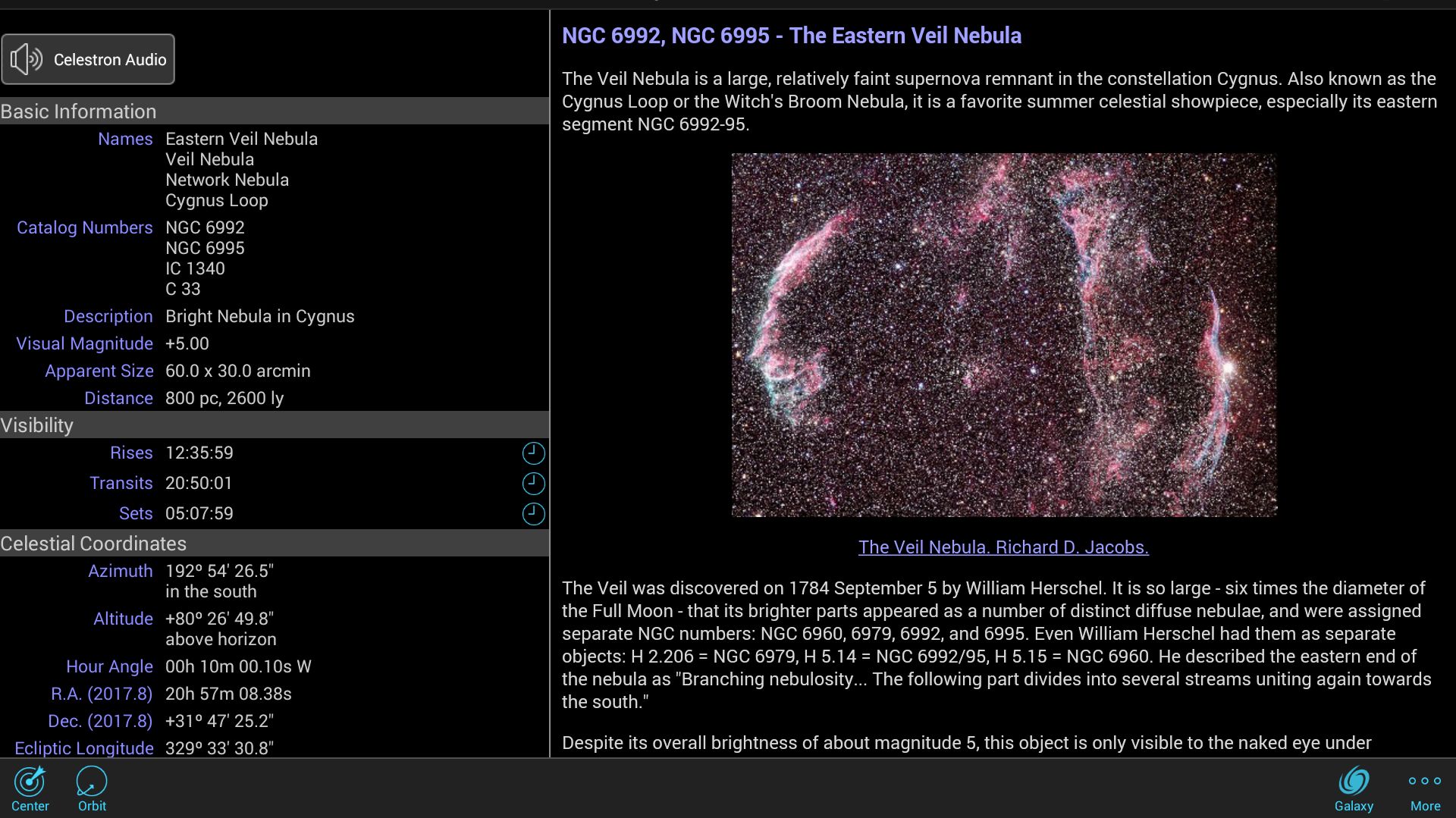
Distant galaxies are distributed all over the sky, but we cannot observe the ones hidden behind the stars, gas and dust of our own galaxy. Because of this, the Messier list galaxies are mainly located away from the plane of the Milky Way. They come in shapes ranging from featureless ellipsoids to flat disks surrounded by well-defined curving spiral arms. When the galaxy is oriented edge-on to our line of sight (or close to that), all of its light is concentrated into a smaller area of sky, making it appear brighter. Some galaxies feature dark dust rims that divide them in two. Galaxies that are oriented face-on to us are generally much dimmer, but they cover a larger area of sky and are among the most spectacular.
The best galaxy for beginner skywatchers is the Andromeda Galaxy, also known as Messier 31. This almost-edge-on spiral galaxy is much larger than our Milky Way, but probably looks very much like it. Under a moonless sky, this object, situated 2.5 million light-years away from Earth, can be seen with unaided eyes, making it about the farthest object a human eye can see! Binoculars reveal that it spans a patch of sky six times wider than the moon. And telescopes reveal more details, including two nearby satellite galaxies.
Because the dim, fuzzy light of galaxies so resembled the comets that Charles Messier was hunting for, he included 42 of them in his list. There's a lot to say about galaxies. We'll devote a future edition of Mobile Astronomy to them.
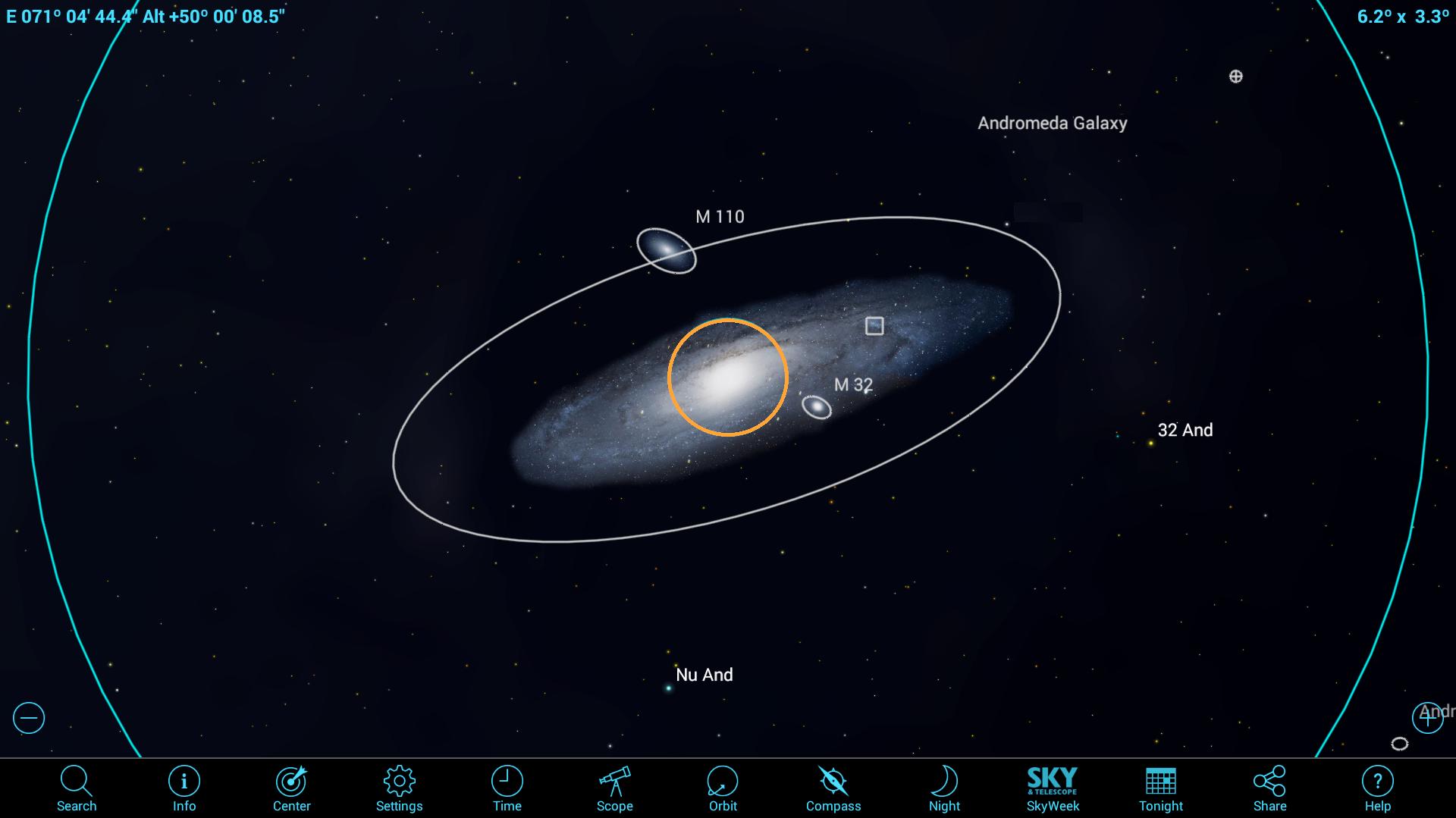
Searching for and displaying deep-sky objects in your app
To get you started, most sky-charting apps include the Messier list as a separate collection of deep-sky objects. SkySafari 5 also provides a separate category for deep-sky objects that includes an extensive list of all the object types. For individual objects, such as the ones listed below, you can type the object's proper name or catalog designation into the search menu.
The SkySafari 5 app's Advanced Search menu is a powerful tool to that allows for a more curated dive into the catalogues. If you are interested in just one particular type of object, such as planetary nebulas or galaxies, you can open the Search menu and select Advanced Search. Put a check mark in the box(es) for the object type(s) you wish to find, and scroll down. The Restrict to Ranges sections lets you limit the results to objects of specific magnitudes (brightness), sizes, positions in the sky, distances from Earth and more. You can also choose to search a single constellation or all of them. Tapping "Do Advanced Search" brings up the objects. Those above the horizon at the app's date and time are highlighted. (You can preplan an observing session by adjusting the date and time to those of your event.)
At the very bottom of the list is a button to make the list into an observing list. If you tap that and then back out of the Advanced Search menu, a new item, called Search Results, will have appeared in the master Search menu. Open it, and you can now sort the list in different ways and display the objects against the sky using Highlight Objects option. A warning: If you don't omit the dimmer objects, you'll get more than you likely want. But it does nicely show how the entire class of objects is distributed with respect to our galaxy.
Next, I'll provide a list of some representative deep-sky objects to head out and look for. The list includes their common names, Messier numbers (Mnn) and main catalog designations.
| Hyades, Melotte 25, Collinder 50 | OC | Taurus | eyes |
| Pleaides, M45 | OC | Taurus | eyes, binoculars |
| Wild Duck Cluster, M11 | OC | Scutum | eyes, binoculars, telescope |
| Double Cluster, NGC 869 & 884 | OC | Perseus | eyes, binoculars, telescope |
| Owl Cluster, NGC 456 | OC | Cassiopeia | binoculars, telescope |
| Hercules Globular Cluster, Messier 13 | GC | Hercules | eyes, binoculars, telescope |
| Messier 92 | GC | Hercules | binoculars, telescope |
| M2 | GC | Aquarius | binoculars, telescope |
| M15 | GC | Pegasus | binoculars, telescope |
| Lagoon Nebula, M8 | EN | Sagittarius | binoculars, telescope |
| Omega (or Swan) Nebula, M17 | EN | Sagittarius | binoculars, telescope |
| Trifid Nebula, M20 | EN, RN | Sagittarius | binoculars, telescope |
| Eagle Nebula, M16 | EN | Serpens | binoculars, telescope |
| North American Nebula, NGC 7000 | EN | Cygnus | binoculars, telescope |
| California Nebula, NGC 1499 | EN | Perseus | binoculars, telescope |
| Heart and Soul Nebulas, IC 1805 & 1848 | EN | Cassiopeia | binoculars, telescope |
| Orion Nebula, M42 | EN, DN | Orion | eyes, binoculars, telescope |
| Veil Nebula, NGC 6960 & 6992 | SN | Cygnus | binoculars, telescope |
| Crab Nebula, M1 | SN | Taurus | telescope |
| Andromeda Galaxy, M31 | SG | Andromda | eyes, binoculars, telescope |
(Abbreviations: OC - Open Cluster, GC - Globular Cluster, EN - Emission Nebula, RN - Reflection Nebula, DN - Dark Nebula, SN - Supernova Remnant, SG - Spiral Galaxy)
Going beyond
Because deep-sky objects are so beautiful, the Astronomy Picture of the Day (APOD) web page usually features images of them taken by the Hubble Space Telescope and professional-grade, ground-based telescopes. While we backyard stargazers can't see those views, we can still feel a thrill when we catch a glimpse of the objects through our own equipment and enjoy teasing out the details we've seen in photos.
In future editions of Mobile Astronomy, we'll go more in depth into galaxies, highlight more objects to see during the long winter nights, explain how to use astronomy apps to plan observing sessions and log your results, preview the coming meteor shower season, and more. Until then, keep looking up!
Editor's note: Chris Vaughan is an astronomy public outreach and education specialist at AstroGeo, a member of the Royal Astronomical Society of Canada, and an operator of the historic 74-inch (1.88 meters) David Dunlap Observatory telescope. You can reach him via email and follow him on Twitter @astrogeoguy, as well as on Facebook and Tumblr.
This article was provided by Simulation Curriculum, the leader in space science curriculum solutions and the makers of the SkySafari app for Android and iOS. Follow SkySafari on Twitter @SkySafariAstro. Follow us @Spacedotcom, Facebook and Google+. Original article on Space.com.
Join our Space Forums to keep talking space on the latest missions, night sky and more! And if you have a news tip, correction or comment, let us know at: community@space.com.
Chris Vaughan, aka @astrogeoguy, is an award-winning astronomer and Earth scientist with Astrogeo.ca, based near Toronto, Canada. He is a member of the Royal Astronomical Society of Canada and hosts their Insider's Guide to the Galaxy webcasts on YouTube. An avid visual astronomer, Chris operates the historic 74˝ telescope at the David Dunlap Observatory. He frequently organizes local star parties and solar astronomy sessions, and regularly delivers presentations about astronomy and Earth and planetary science, to students and the public in his Digital Starlab portable planetarium. His weekly Astronomy Skylights blog at www.AstroGeo.ca is enjoyed by readers worldwide. He is a regular contributor to SkyNews magazine, writes the monthly Night Sky Calendar for Space.com in cooperation with Simulation Curriculum, the creators of Starry Night and SkySafari, and content for several popular astronomy apps. His book "110 Things to See with a Telescope", was released in 2021.











